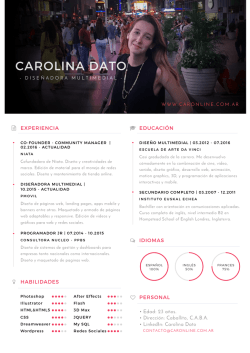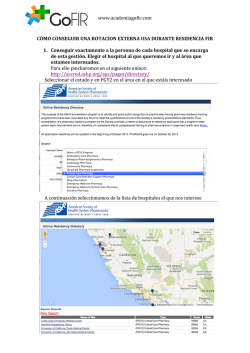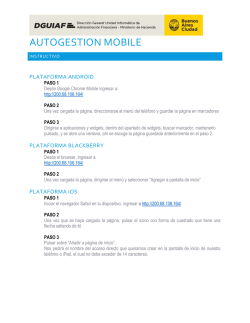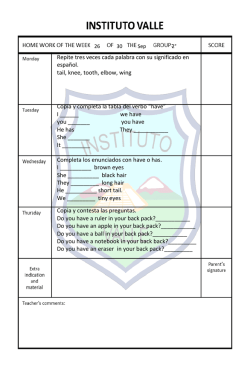
Dear Family, Sincerely
Name Think Math! Chapter 13 Date Dear Family, Y our child is continuing to develop algebraic reasoning skills that the class has been working on throughout the school year. In this chapter, your child will make connections between drawings and diagrams and the use of algebraic language. The total weight of the mobile is 48 units. What equations can you write to show the relationships? What is the weight of each circle(C), square(S), triangle(T), and hexagon(H)? The total is 48, so sides A and B each must be 24. The sides of A must balance, so 2C ⫽ 1S. The sides of B must balance, so 4T ⫽ 3H. A B Since A must be 24, C ⫽ 6 and S ⫽ 12. Since B must be 24, T ⫽ 3 and H ⫽ 4. Your child will also use diagrams to represent algebraic expressions and equations. © Education Development Center, Inc. What expression or equation does the diagram represent? The length of the rectangle is 4 a 9 a ⫹ 9. The width is 4. 4a 36 The area of the rectangle is length times width, or (a ⫹ 9) ⫻ 4. Fun with Algebra VOCABULARY Here are some of the words we use in class: Balance To equalize in weight or number Equation An algebraic or numerical sentence that shows that two quantities are equal Balance Scale An instrument for weighing that consists of a bar supported freely in the center with two pans of equal weight at its ends; objects placed in the pans are of equal weight when the bar is horizontal Variable A letter or symbol that stands for one or more values The diagram represents the expression (a ⫹ 9) ⫻ 4, or 4a ⫹ 36. Use the examples here and the game on the back of this page to help your child develop algebraic reasoning. Sincerely, School-Home Connection MNENL07AAY5X_TRB_SH49-SH52_V4.indd 49 Teacher Resource Book SHC49 1/4/07 3:35:56 PM Balance Play this game with one or two family members. The goal is to make a mobile that balances. You will need a 1–6 number cube or six number cards (1–6). How to Play the Game • To start, agree on a number between 4 and 8 for how many numbers your mobile will use. You can increase the number as the game goes on. If you are using number cards, replace a chosen card before choosing again. • On your own paper, draw the top of a mobile. It should look like this one. • Take turns tossing the cube. Record the numbers above your mobile until you have ten numbers. • Once you have all the numbers, everyone plays at the same time. Choose and arrange on your mobile as many numbers as you agreed to, so that all the arms balance. The first to balance the entire mobile wins! £ªa !m ¡ T T T s s T s ¡ s © Education Development Center, Inc. Example: Suzi and Dan agree to use 8 numbers. They each try to balance the same 8 numbers. Suzi wins because both arms of her mobile balance. So, her entire mobile balances. On Dan’s mobile, the left arm balances, but the right arm does not. So, his entire mobile does not balance. SHC50 Teacher Resource Book MNENL07AAY5X_TRB_SH49-SH52_V4.indd 50 School-Home Connection 1/4/07 3:36:26 PM Nombre ¡A pensar en Matemáticas! Capítulo 13 Fecha Estimados familiares: S u hijo continúa desarrollando las destrezas de razonamiento algebraico que empezó a desarrollar a comienzos del año escolar. En este capítulo, relacionará dibujos y diagramas con el lenguaje algebraico. El peso total del móvil es 48 unidades. ¿Qué ecuaciones puedes escribir para mostrar las relaciones? ¿Cuál es el peso de cada círculo (C), cuadrado (Cu), triángulo (T) y hexágono (H)? peso o número Ecuación Un enunciado A B Los lados de B deben estar balanceados; por lo tanto, 4T ⫽ 3H. Como A debe pesar 24, C ⫽ 6 y Cu ⫽ 12. Como B debe pesar 24, T ⫽ 3 y H ⫽ 4. Su hijo también usará diagramas para representar expresiones algebraicas y ecuaciones. ¿Qué expresión o ecuación representa el diagrama? 4 a 9 4a 36 VOCABULARIO Estos son algunos de los términos de vocabulario que usamos en clase: Balancear Igualar en El total es 48; por lo tanto, los lados A y B deben pesar 24. Los lados de A deben estar balanceados; por lo tanto, 2C ⫽ 1Cu. Diviértete con el álgebra La longitud del rectángulo es a ⫹ 9. El ancho es 4. algebraico o numérico que muestra que dos cantidades son iguales Balanza de platillos Un instrumento para pesar que consta de un barra sostenida libremente en el centro con dos platillos de igual peso en los extremos; los objetos que se colocan en los platillos tienen el mismo peso cuando la barra está en posición horizontal Variable Una letra o un símbolo que representa uno o más valores El área del rectángulo es la longitud por el ancho, o (a ⫹ 9) ⫻ 4. El diagrama representa la expresión (a ⫹ 9) ⫻ 4, o 4a ⫹ 36. Estos ejemplos y el juego que está en la página siguiente ayudarán a su hijo a desarrollar el razonamiento algebraico. La escuela y la casa MNENL07AAY5X_TRB_SH49-SH52_V5.indd 51 Recursos para el maestro SHC51 1/25/07 2:51:54 PM ¡A balancear! Diversión ENFAMILIA Juega a este juego con uno o dos familiares. El objetivo es hacer un móvil balanceado. Necesitarán un cubo numérico del 1 al 6 o seis tarjetas de números numeradas del 1 al 6. Cómo se juega • Para empezar, pónganse de acuerdo en un número entre 4 y 8 para saber cuántos números tendrá el móvil. A medida que avanza el juego, pueden aumentar el número. Si usan tarjetas de números, reemplacen una tarjeta que ya eligieron antes de volver a elegir. • En una hoja de papel, dibujen la parte superior de un móvil. Debe parecerse a esto: • Túrnense para lanzar el cubo. Anoten los números sobre el móvil hasta que tengan diez números. • Una vez que tengan todos los números, todos juegan al mismo tiempo. Elijan y dispongan en su móvil tantos números como hayan acordado, de manera que todos los brazos estén balanceados. ¡Gana el primer jugador que balancea todo el móvil! Ejemplo: Suzi y Daniel acordaron usar 8 números. Ambos intentan balancear los mismos 8 números. £ªa !maFd ¡ T T T s s T s ¡ s Suzi es la ganadora porque ambos brazos de su móvil están balanceados. Entonces, todo el móvil está balanceado. En el móvil de Daniel, el brazo de la izquierda está balanceado, pero el brazo de la derecha no. Entonces, su móvil no está balanceado. SHC52 Recursos para el maestro MNENL07AAY5X_TRB_SH49-SH52_V5.indd 52 La escuela y la casa 1/25/07 2:51:58 PM
© Copyright 2025





